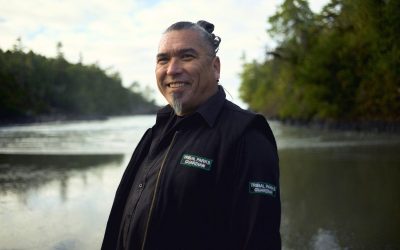Place DNA® is at the core of the three layers of place branding that help destination marketers understand how residents, visitors and potential visitors perceive a place. By articulating the intrinsic character of your destination, Place DNA® provides an authenticity test for all marketing activities that follow. Identifying the elements of Place DNA® will help ensure that your destination’s marketing efforts are made more effective by emphasizing your true sense of place.
Elements of the Place DNA® code
In case you’ve never studied genetics, here’s a quick crash course: DNA stands for deoxyribonucleic acid – an extremely long molecule of nucleic acid in a double helix pattern contained in every living cell. This molecule determines characteristics that make each species biologically unique, passed down from one generation to the next. Since places and destinations should be treated as living organisms rather than consumer goods, we can think of place DNA as its hereditary material. Nearly every cell within a place has the same DNA and no two places are exactly alike.
The uniqueness of DNA molecules comes from combinations of four building blocks represented by four nitrogen bases with these abbreviations: guanine (G), adenine (A), thymine (T), and cytosine (C). You may recognize this sequence from the 1997 movie “Gattaca” starring Ethan Hawke, in which the world prizes people with the most “valid” genes as a cautionary tale against bland conformity. We can use the same letters to identify the elements of Place DNA®:
G is for Geography – This describes the environment, which includes a place’s history, natural surroundings, location, size, landscape, resources, capacity, and more.
T is for Technology – This describes the human impact on a place, which includes factors like its heritage, monuments, buildings, landmarks, planning, infrastructure and economy.
A is for Authenticity – The traditions, attitudes, cultural contributions, dominant traits, habits and peculiarities of a group of people who live and interact with one another are all factors that create a sense of place and express that place’s authenticity.
C is for Continuity – This element reflects how a place has combined the three previous traits over time and how that change affects Place DNA®. Places are not reinvented overnight and marketers must respect how their place has been moulded over time.
By describing your destination or place in terms of these four elements of Place DNA®, you can guarantee that your marketing efforts are better aligned with your destination’s identity and residents.
The perils of ignoring Place DNA®
What does this look like in practice? When places don’t respect the four elements of their DNA, marketing can go awry. This campaign from Singapore is an unforgettable example for all the wrong reasons. The Singapore Tourism Board briefly stepped into the international spotlight with this 2014 promotional video featuring the slogan “Singapore. See where the world is heading.” The couple in the video gives us a demonstration – complete with over-enthusiastic exclamations – on what to do on your first date in Singapore. After the couple does a few sightseeing activities and has a romantic dinner, the clip ends with a surprise positive pregnancy test. After swift online criticism, the destination removed the video from its YouTube channel. Nothing in this video really gives viewers a reason to visit or live in the city-state.
Examples abound in a documentary called “Pretpark Nederland” (Amusement Park The Netherlands) by Dutch filmmaker Michiel van Erp. The film follows a series of Dutch mayors who launch zany ideas and campaigns to earn quick cash for their towns – from medieval fantasy festivals to dance parties in the rural countryside. The mayor of Zutphen, Holland infamously attempted to turn his city into the region’s chocolate capital. While entertaining, the documentary points to a sad reality: These kinds of money-driven, inauthentic, one-shot campaigns give city marketing its bad reputation. Have you ever met a politician who hasn’t said that their region or city can improve the economy by becoming a shopping Valhalla? These leaders will have a hard time earning real results without considering Place DNA®.
Some destinations lead by authentic example
Fortunately, there are also many positive examples of destinations who align their marketing with their authentic Place DNA®. Destination Cleveland, a long-time target of jokes and victim of negative public perception, has recently reimagined that image into something positive by engaging its residents and offering “world-class experiences without the world-class ego.” Across the pond in Belgium, Charleroi has been ranked as the ugliest city in the world. Instead of denying this, some residents have taken this with a sense of humour and created the very unique Charleroi Safari, which tours places like the “ghost metro” and “the most depressing street in all of Belgium.” This experience is perhaps not for everyone, but to a select audience, the overt industrial decay makes Charleroi one of the most Instagrammable places on the planet. Cleveland and Charleroi have at least one thing in common: rather than battling negative perceptions, they embrace their DNA.
Other destinations have created events to celebrate their unusual uniqueness. The small town of International Falls, Minnesota, is surrounded by nature’s elements. Their Place DNA® includes the fact that they have the coldest average temperature in the United States. After branding themselves as “Icebox of the Nation,” they started to organize a festival called “Icebox Days” that includes sports like frozen turkey bowling and the “Freeze Yer Gizzard Blizzard Run”. Another place that combines a healthy sense of humour with a good helping of truth is the town of Klute, Texas, which has created an annual event called “The Great Texas Mosquito Festival”.
These towns show that every place, big or small, can create a sustainable competitive advantage by embracing their identity and authenticity. The events stem from their DNA, not the other way around. If you don’t think your destination is unique, you likely haven’t been digging deep enough.
One last, great example comes from Yubari, Japan, a coal mining city on the northern island of Hokkaido. The city went bankrupt in 2007, with a debt of $353 million and a small population of approximately 12,000. Young people moved to more metropolitan areas and the downward trend seemed inevitable. Yubari’s leadership worked with a Tokyo-based agency to research the city’s DNA. Their research uncovered the fact that Yubari boasted the lowest divorce rate in Japan. From this, they created a campaign with the slogan, “Yubari, no money but love” and two mascots, a couple called “Yubari Fusai”. “Fusai” means both “debt” and “married couple” in Japanese. The “no money but love” idea was an honest, yet endearing articulation of the situation the city faced. By 2009, visitation to Yubari had increased 10% year-over-year, bringing much-needed funds back into the economy. The Yubari Fusai icon was just the right means to generate word of mouth, reenergize its citizens and help make the city economically viable once more.
What lesson can we learn from these examples? In the movie Gattaca, those with flawless DNA are the most highly valued. As an “invalid” specimen, Ethan Hawke’s character uses his imperfections to overcome the system he lives in. Often, it’s our flaws and quirks that help us make the difference others can’t. Places and destinations face the same challenge as they use their authentic strengths and weaknesses to create something unique.
Featured image credit: Mark Werner, Flickr









Frank this article lands on a very important message about using a destination’s authentic strengths and weaknesses to create something unique.
A destination’s uniqueness is very powerful, yet is so often drowned in a sea of sameness, as herd instinct kicks in with destinations seeking ‘security’ in running similar campaigns, tag lines and imagery.
Courage comes in many forms. I think the Tourism Australia Dundee Super Bowl advert is a good example of courage to create something unique and run with a story that could only be Australian.